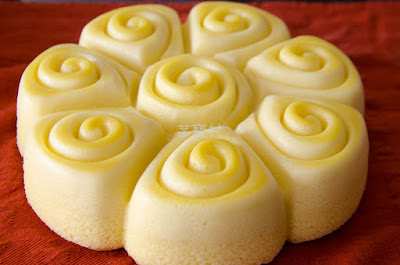When you make baguettes once or twice a year, they can only be considered a way to practice shaping and slashing or as Lucy calls them – Practice Slash Bags. This version also has 20% 5 whole sprouted grains in the mix consisting of: wheat, emmer, spelt, rye and Kamut in keeping with Lucy’s love of all things sprouted and multigrain when it comes to bread.

We also included a 140 F, 30 g baked / scald of sprouted MG flour with a bit of red and white malts as has been Lucy’s recent addiction. The idea was to increase the flavor, sweetness and the moisture, texture and softness of the crumb. The water was topped up at the end of the 2 hour bake to make the scald 60 g total before it was added to the autolyse.

We usually like to use the lowest protein AP flour available, in the 10 -11% range in keeping with the French traditional flour used but we ran across some AP unbleached flour in Sprouts bins that is supposedly 12% protein and decided to use this flour and see how it worked for baguettes instead.

We also like to make baguettes because, with a little wine, cheese and charcuterie, we can transplant ourselves back to any outdoor cafe in Paris for a fine afternoon by the pool - if not actually along the Seine. As an added bonus, we also get to use our favorite double baggie bamboo form for the long, cold proof in the fridge.

The first thing on the list to get done was the sprouting of the whole grains which was started early Tuesday morning by soaking the grains in water for 4 hours before putting them in the sprouter for another 24 hours. Wednesday morning, we dried the sprouts in the dehydrator at 105 F and ground them in the Nutrimill.

Once the whole grains were turned into flour, we used them to feed 6 g of our 6 week retarded rye starter to make the levain over (3) 4 hours stages. After the total 12 hour levain build we retarded the levain for 24 hours in the fridge. Thursday morning we started the baked / scald which took 2 hours in the mini oven

The only whole grain flour in the dough were the sprouted ones in the baked/ scald which were now completely hydrated at 100%. Thursday, in the late afternoon, the autolyse of dough flour, water and baked scald was started and completed in 1 hour. We sprinkled the Pink Himalayan sea salt on top of the autolyse so we wouldn't forget it.

After dinner, once the levain warmed up on the heating pad during the autolyse, we added the levain to the mix. We did 8 minutes of slap and folds and then 2 more sets at 12 slaps and folds each before 3 sets of stretch and folds from the compass points were done. All of the gluten development was done on 20 minute intervals and finished in 2 ¼ hours

Once finished the dough was rested before being pre-shaped, rested, final shaped, loaded into the cloth and rice floured lined bamboo mold, bagged in a used trsah can liner and immediately placed into the fridge for a 21 hour retard.

Once removed from the fridge the next day, the dough was allowed to warm up for an hour before BO Betsy was fired up for her 550 F preheating. 45 minutes later the Mega Steam went in and, 15 minutes later, the dough was un-molded onto parchment on a peel, slashed and loaded into the bottom stone as the oven heat was reduced to 480 F.

After 10 minutes of steam, the Mega Steam was removed and the temperature reduced to 425 F with the convection fan on this time. 10 minutes later the baguettes looked and tested 208 F and considered done. They were left on the stone, oven off with the door ajar to further crisp the skin.

They sprang and bloomed poorly under steam but blistered and browned up nicely once the steam came out. The ears never formed for some reason.... and that reason was because the dough was over proofed . 21 hours was about 9 hours too long I’m guessing.

Since this is the first time we have used sprouted whole grain flour and a baked scald in baguettes, we can’t wait for these to cool so we can taste them. Expectations of a more healthy, better tasting and aromatic baguette are running pretty high…..The crust was thin and crisp and,as time went on, a bit chewy. The crumb wasn't as open as we would like but 20% whole sprouted grains with a 21 hour cold retard was too much and the the bread was over proofed. Still, it is the best tasting SD baguette I have ever had - nothing even close! I will give up the holes for a fine tasting baguette like this one every time. Next time we up the sprouted grain to 25% and cut the cold proof to 12 - 14 hours and get it in the oven before the dough over proofs. Hopefully, the taste will hang around and the holes get a bit larger. i haven't even put butter on this bread yet - and might not :-)

When puff paste is used for the top of an apple pie the pretty decorated edge disappears in the puff

SD Levain Build | Build 1 | Build 2 | Build 3 | Total | % |
6 Week Retarded Rye Sour Starter | 6 | 0 | 0 | 8 | 2.31% |
Whole Sprouted Multi Grain | 6 | 12 | 24 | 42 | 12.14% |
Water | 6 | 12 | 24 | 42 | 12.14% |
Total | 20 | 24 | 48 | 92 | 26.59% |
| | | | | |
Levain Totals | | % | | | |
Whole Sprouted Multi Grain | 46 | 13.29% | | | |
Water | 46 | 13.29% | | | |
Levain Hydration | 100.00% | | | | |
Levain % of Total Flour | 13.29% | | | | |
| | | | | |
Dough Flour | | % | | | |
12 % Protein Winco AP | 300 | 86.71% | | | |
Total Dough Flour | 300 | 86.71% | | | |
| | | | | |
Salt | 7 | 2.02% | | | |
Water | 195 | 56.36% | | | |
| | | | | |
Dough Hydration | 65.00% | | | | |
Total Flour w/ Starter | 346 | | | | |
Water | 241 | | | | |
| | | | | |
Hydration with Starter | 69.65% | | | | |
Total Weight | 654 | | | | |
% Whole Sprouted Grain | 20.21% | | | | |
| | | | | |
Scald / Bake is 24g whole multigrain flour and 3g each | | | |
of red and white malts and 30 g of water - 60 g total. | | | |
| | | | | |
Multigrain sprouted flour is equal amounts of kamut, spelt, rye, wheat and emmer |
| | | | | |
Hydration with baked scald is 72% | | | | | |

Lucy says not to forget the salad














